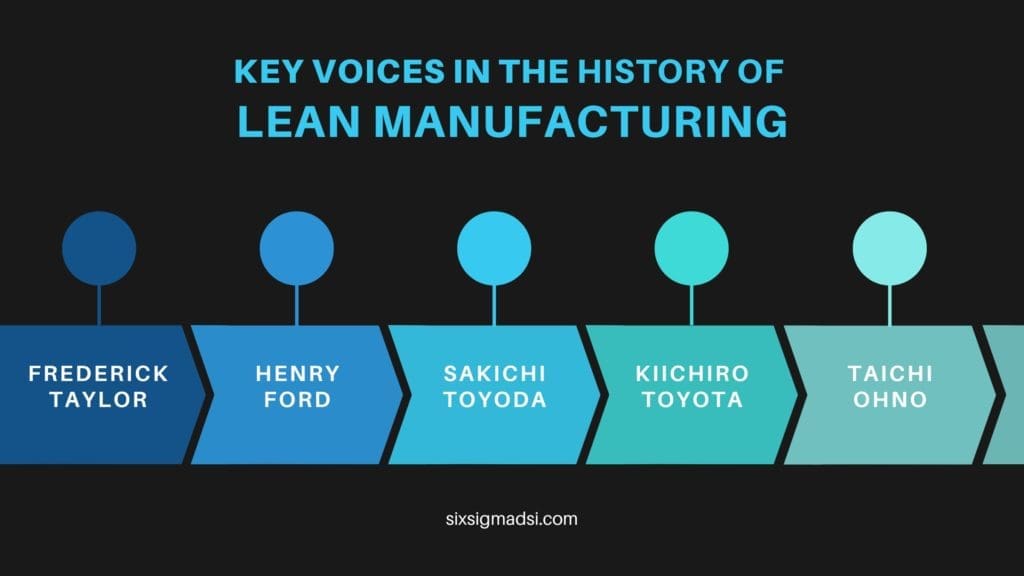Table of contents
Lean Six Sigma in Manufacturing
Lean Six Sigma was originally created to improve performance in the manufacturing sector. It’s a six sigma tool of quality control that was especially useful for large-scale companies. This quality control system had two main purposes: to improve manufacturing processes and eliminate defects. 6s Lean Six Sigma manufacturing tools were later extended to other industries around the globe. Let’s take a look at Six Sigma and what it means when we refer to Six Sigma manufacturing.
Lean Six Sigma and Manufacturing
Motorola developed the Six Sigma concept in 1986 as a collection of tools and techniques that would help them improve their manufacturing processes. Jack Welch used this concept in 1995 to create the core business strategy for General Electric. It is now used by many industrial sectors. This process was adopted by nearly half of Fortune 500 companies by the end of the 20th century.
Learn more about Six Sigma. This Six Sigma Green Belt Tutorial video will be of interest to you.
Six Sigma is a method that identifies and eliminates defects. It also reduces the changeability of business and manufacturing processes in order to improve quality outputs. An organization uses this method to determine the value of a project. Six Sigma can be applied to manufacturing. It will reduce pollution, speed up one or more processes, and lower the production cost, which in turn will increase profits and customer satisfaction.
Motorola shared some amazing facts about Six Sigma’s benefits to its organization after it registered its service mark. They revealed that they had saved $17 billion in quality improvements by the end of 2006 thanks to this unique system.

Lean Six Sigma in Manufacturing: How it works
Motorola saw a link between lower production costs and higher product quality in the 1980s when Six Sigma was first developed. The common belief was that higher quality would increase production costs. This was not true.
Six Sigma’s core principles state that a company’s success is dependent on its ability to maintain stable manufacturing processes. It is important that these factors are measured statistically in order to improve them.
Six Sigma-certified organizations set up systems and processes that include quantifiable metrics in manufacturing, finance, and service. This approach is used to identify the best projects for their business goals. After defining a goal or project, the Six Sigma process is followed by the organization in four phases.
- Measure. This step involves measuring existing systems in order to determine what, if any, can be considered a baseline.
- Analyze. This step is about analyzing the system and identifying ways to eliminate any defects. This can be done in many ways, including statistical analysis to identify the root cause.
- Get better. This step allows project teams to find the best solutions and then create and test a plan of action to improve a process or achieve a goal.
- Control. The Control step may be continuous; an organization might modify operating instructions, policies, or procedures in order to prevent future problems.
Benefits of Lean Six Sigma in Manufacturing
6s Lean Six Sigma is a combination of two methodologies and tools, Lean and Six Sigma, that can bring significant benefits to the manufacturing industry. Here are some of the key benefits:
- Increased efficiency and reduced waste: Lean Six Sigma focuses on identifying and eliminating waste in all areas of a manufacturing process, resulting in increased efficiency and lower costs.
- Improved quality: Six Sigma is a quality management approach that aims to reduce defects to a minimum, resulting in higher quality products and increased customer satisfaction.
- Enhanced customer satisfaction: Lean Six Sigma helps to identify and address customer needs and requirements, resulting in improved customer satisfaction and loyalty.
- Increased competitiveness: The implementation of Lean Six Sigma can help manufacturers to remain competitive by reducing costs, improving quality, and increasing efficiency.
- Improved employee satisfaction: Lean Six Sigma emphasizes the importance of involving employees in process improvement efforts, which can lead to increased employee engagement and satisfaction.
- Increased profitability: The combination of reduced waste, improved quality, and increased efficiency can result in increased profitability for manufacturers.
- Data-driven decision-making: Lean Six Sigma relies on data and statistical analysis to identify opportunities for improvement, resulting in data-driven decision-making and a culture of continuous improvement.
Example of Lean Six Sigma in Manufacturing
Let’s say a manufacturing company produces plastic widgets and receives a high number of customer complaints about defective widgets. To address this issue, the company launches a Lean Six Sigma project.
- Define the problem: The first step is to clearly define the problem, which in this case is the high number of customer complaints about defective widgets.
- Measure the current process: The team collects data on the manufacturing process, including the number of defects, the root causes of defects, and the time it takes to produce each widget.
- Analyze the data: Using statistical analysis, the team identifies the key factors contributing to the defects. They find that a high percentage of defects are due to improper training of employees on how to operate the machinery.
- Improve the process: Based on the analysis, the team implements a new training program for employees and modifies the machinery to make it easier to use.
- Control the process: The team establishes a control plan to monitor the results of the improvements and ensure that the process remains in control. They collect data on the number of defects and perform regular audits to ensure that the improvements are sustained.
After implementing these improvements, the company experiences a significant reduction in the number of customer complaints about defective widgets, as well as a decrease in the time it takes to produce each widget. These results demonstrate the power of Lean Six Sigma in improving manufacturing processes and achieving improved outcomes for both the company and its customers.

Lean Six Sigma Goals and Features
6s Lean Six Sigma are tools for improving the manufacturing industry. It focuses on measuring and quantifying the financial returns for each project. These features enable an organization to clearly identify the roles and responsibilities of each member of its team in order to improve the manufacturing process.
Six Sigma production aims to minimize defects in manufacturing processes. This system aims to reduce the number of defects by 3.4 per million opportunities. Although this may seem impossible, most manufacturing companies are able to achieve this goal by using this method to produce high-quality products.
Lean Six Sigma Certification
Six Sigma Certificate holders have the option to obtain certification at different levels. This is similar to other martial arts systems, such as the Six Sigma Green Belt, which is the first Six Sigma certification. Masters attain a Six Sigma Black Belt.
Six Sigma Green Belt or any Six Sigma certificate are highly valued as they can demonstrate their ability to manage, control, evaluate, and measure projects. Although Six Sigma was originally a manufacturing method, it has been adopted by many industries. Certificate holders can use their skills in any organization.
What is your experience using Lean Six Sigma in Manufacturing?
Let us know in the comments below.



















